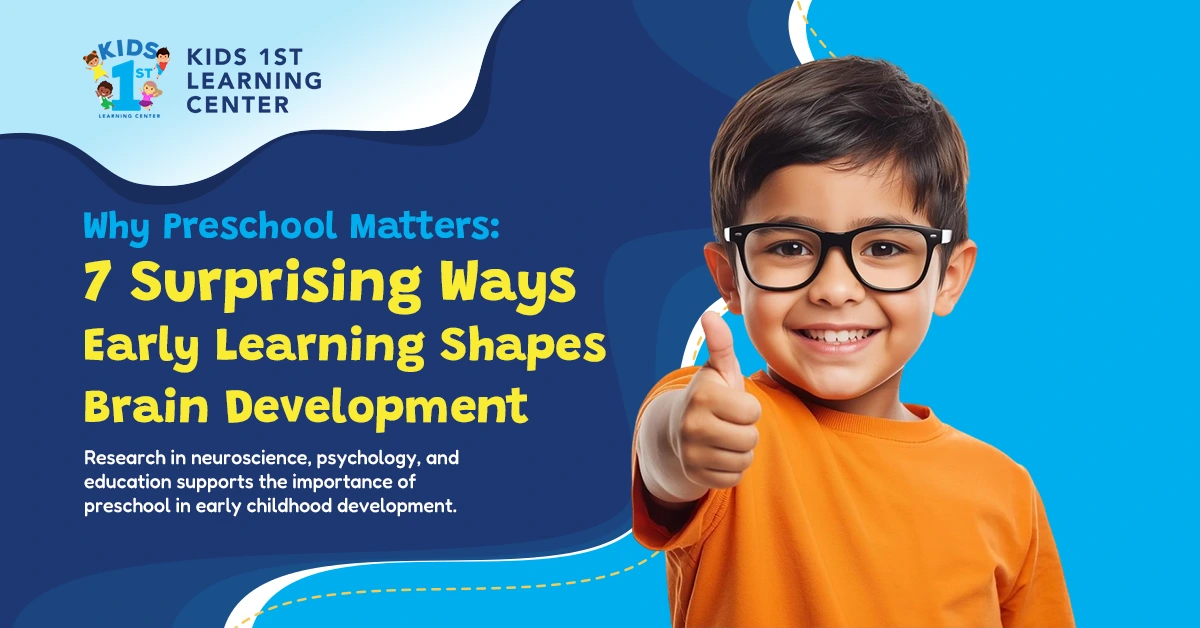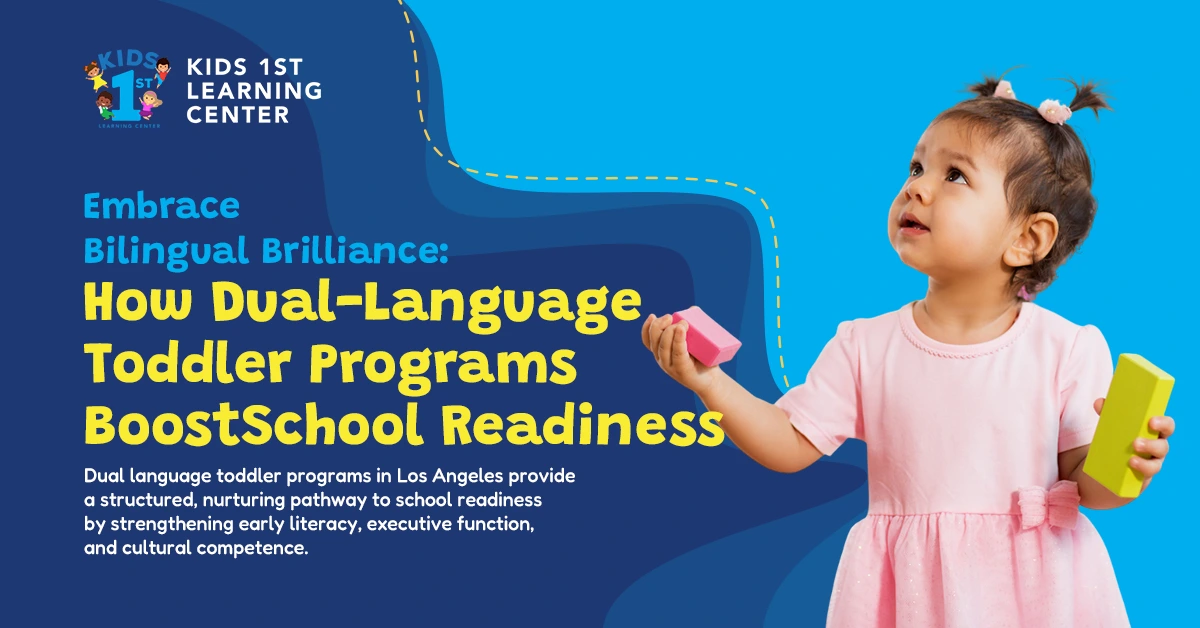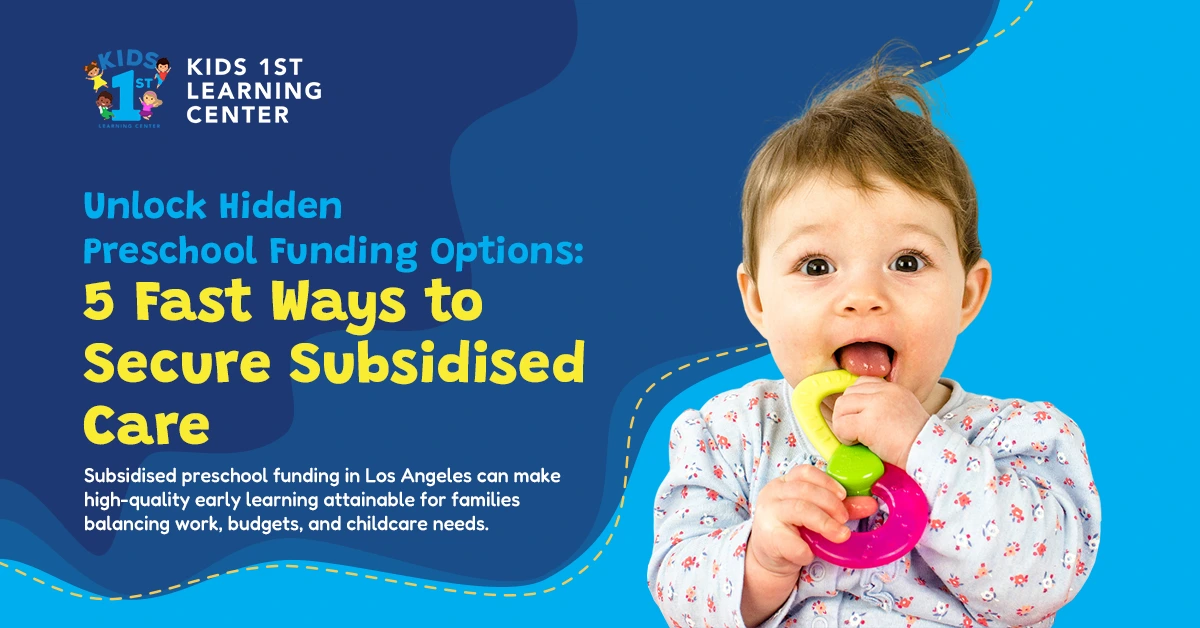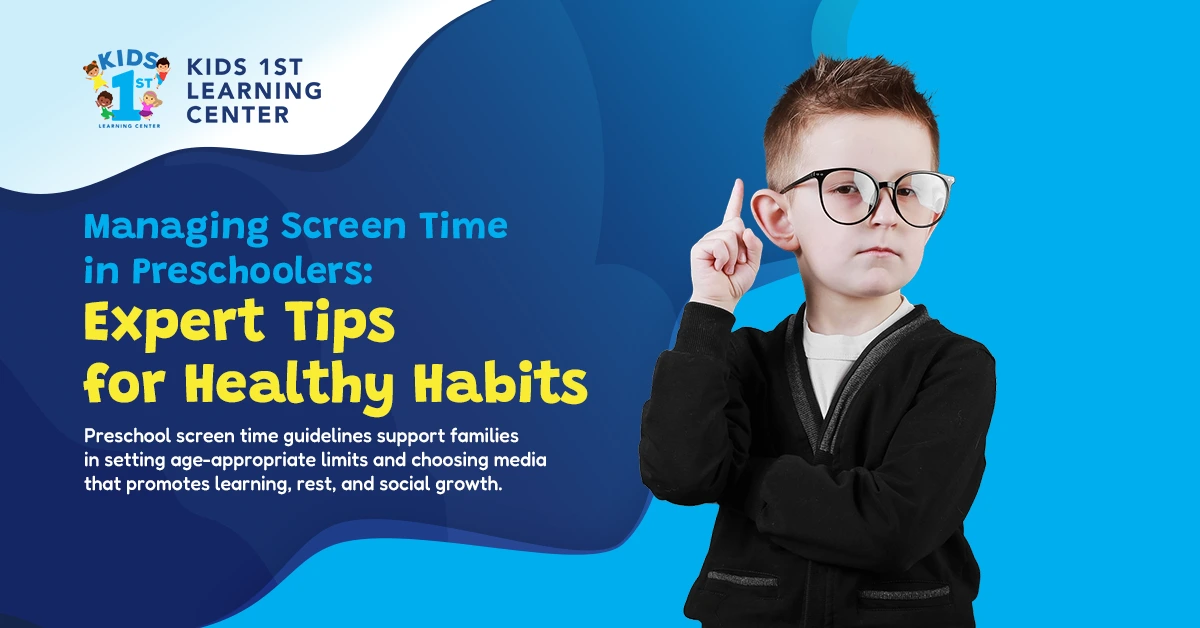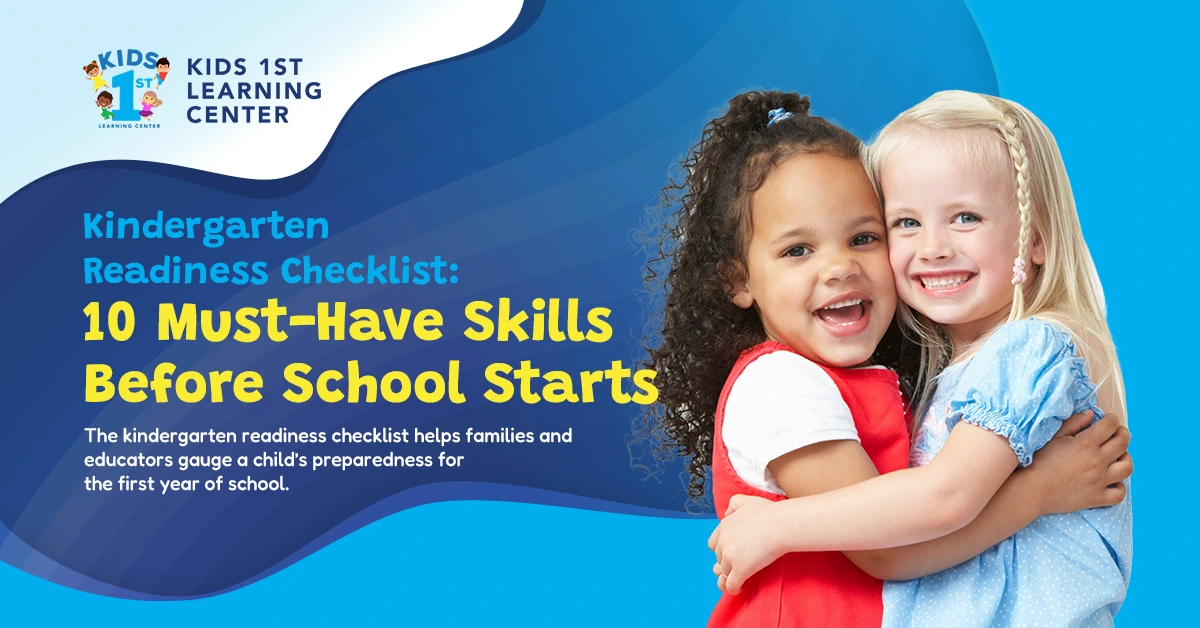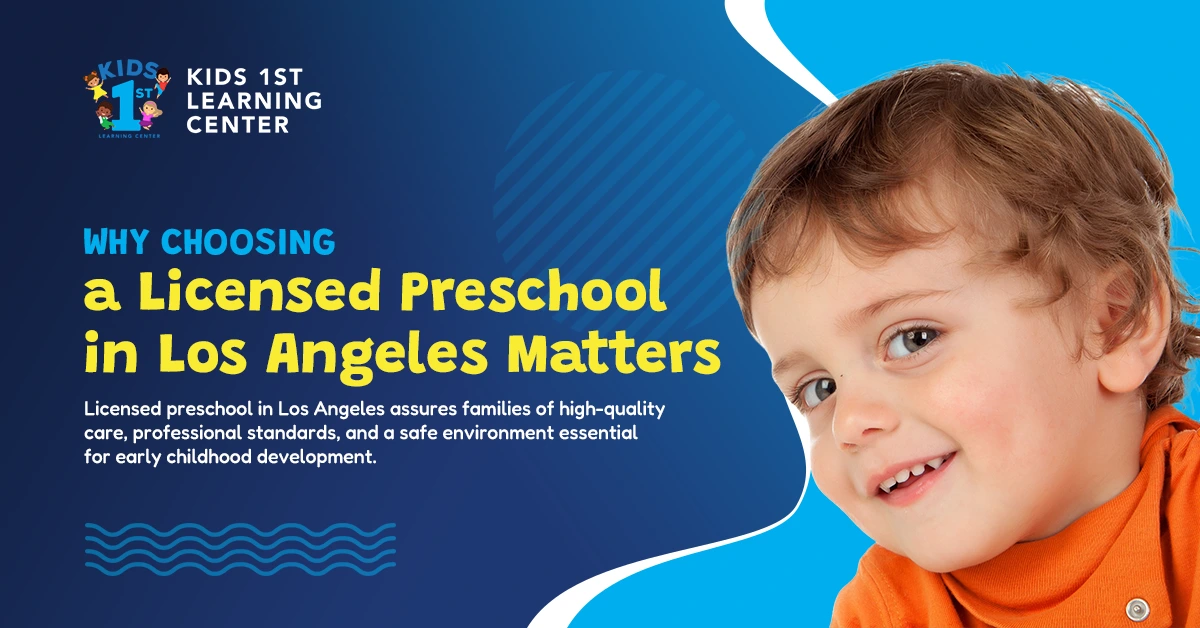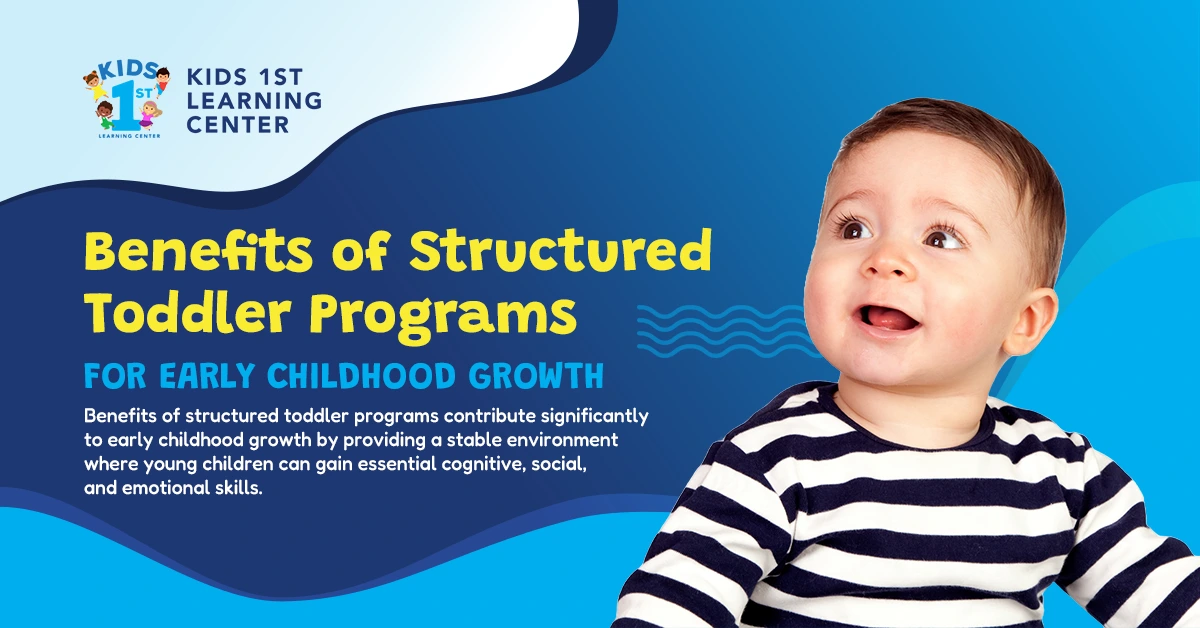Dual language toddler programs in Los Angeles provide a structured, nurturing pathway to school readiness by strengthening early literacy, executive function, and cultural competence. In classrooms that purposefully alternate languages through songs, stories, and play, children build vocabulary, phonological awareness, and listening stamina while developing problem-solving and turn-taking skills.
Small-group routines and visual supports help toddlers follow directions, transition calmly, and participate confidently. Families benefit from consistent communication and practical strategies for language use at home, reinforcing progress between school days. With qualified teachers, clear goals, and developmentally appropriate activities, bilingual learning becomes a daily habit that prepares children for preschool expectations and long-term academic success.
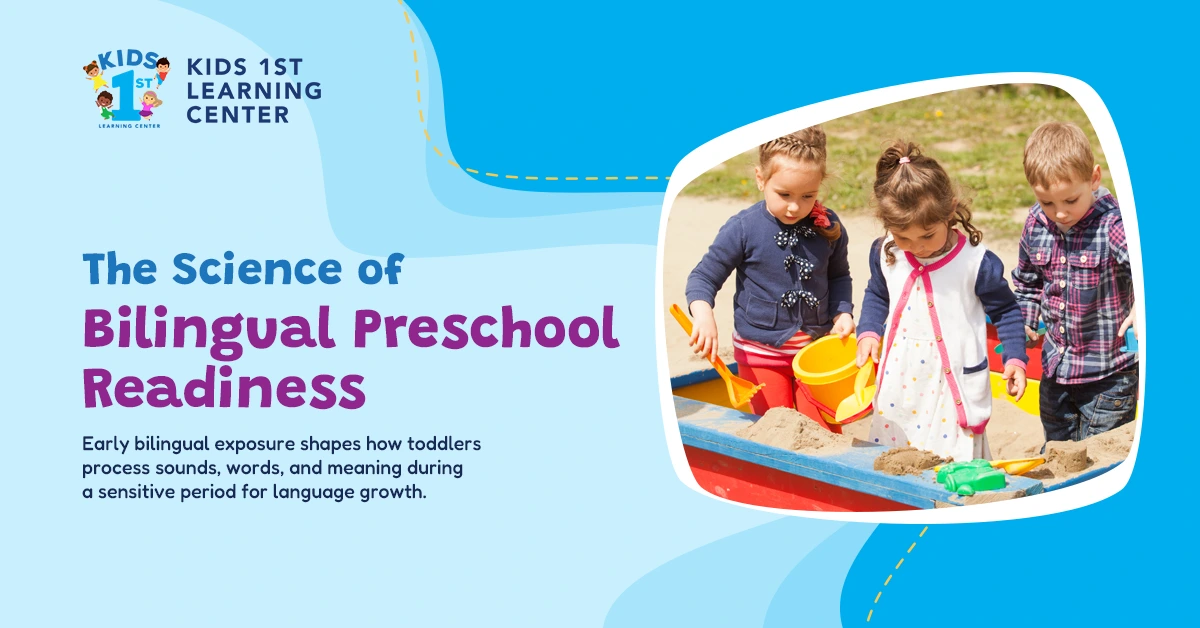 Early bilingual exposure shapes how toddlers process sounds, words, and meaning during a sensitive period for language growth. Consistent, intentional practice across two languages supports attention, memory, and self-regulation—skills that anchor school readiness. A research-informed approach links daily routines to measurable milestones.
Early bilingual exposure shapes how toddlers process sounds, words, and meaning during a sensitive period for language growth. Consistent, intentional practice across two languages supports attention, memory, and self-regulation—skills that anchor school readiness. A research-informed approach links daily routines to measurable milestones.
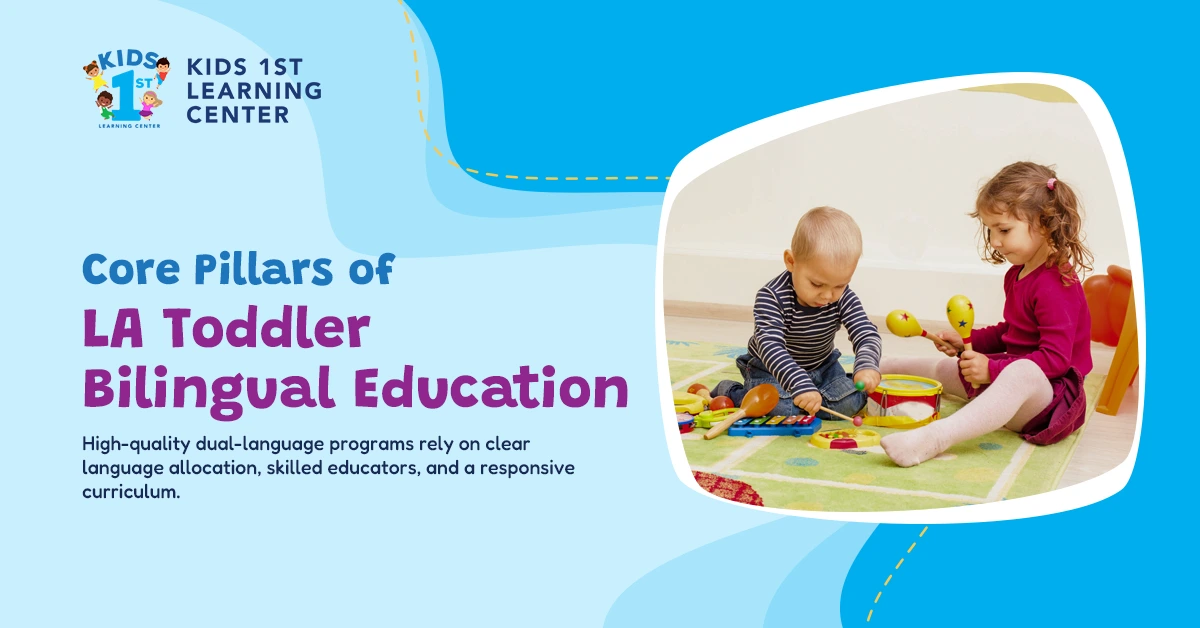 High-quality dual-language programs rely on clear language allocation, skilled educators, and a responsive curriculum. The pillars below show how effective classrooms support toddlers while honoring the home language.
High-quality dual-language programs rely on clear language allocation, skilled educators, and a responsive curriculum. The pillars below show how effective classrooms support toddlers while honoring the home language.
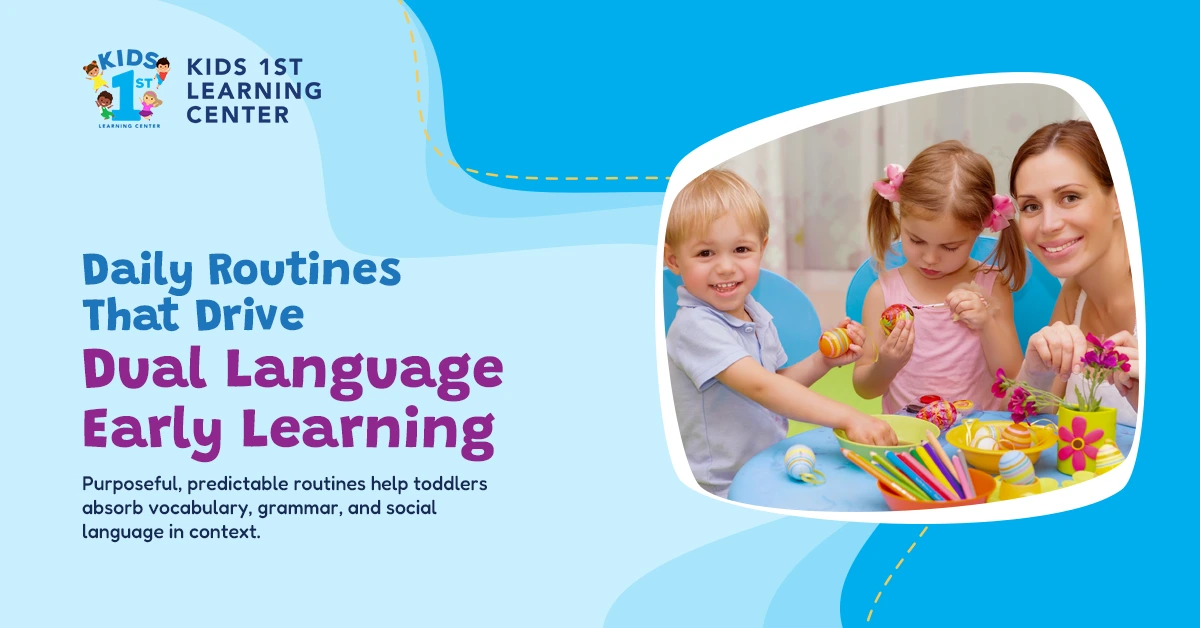 Purposeful, predictable routines help toddlers absorb vocabulary, grammar, and social language in context. Short listening, imitation, and practice cycles create steady gains without overwhelming attention spans. Clear cues tell children which language is active, so participation remains confident and calm.
Purposeful, predictable routines help toddlers absorb vocabulary, grammar, and social language in context. Short listening, imitation, and practice cycles create steady gains without overwhelming attention spans. Clear cues tell children which language is active, so participation remains confident and calm.
The Science of Bilingual Preschool Readiness
 Early bilingual exposure shapes how toddlers process sounds, words, and meaning during a sensitive period for language growth. Consistent, intentional practice across two languages supports attention, memory, and self-regulation—skills that anchor school readiness. A research-informed approach links daily routines to measurable milestones.
Early bilingual exposure shapes how toddlers process sounds, words, and meaning during a sensitive period for language growth. Consistent, intentional practice across two languages supports attention, memory, and self-regulation—skills that anchor school readiness. A research-informed approach links daily routines to measurable milestones.
Brain Plasticity and Early Language Networks
When input is rich and predictable, toddlers form durable pathways for listening and speech planning. Short, repeated routines deepen understanding and expressive skills.- Phonological mapping: Songs and rhymes highlight syllables and sound patterns in both languages.
- Cross-language transfer: Story recall, sequencing, and categorizing in one language strengthen the other.
- Comprehension first: Children typically understand far more than they speak, which reflects typical development.
Executive Function and Cognitive Flexibility
Managing two linguistic systems exercises attention and decision-making. Purposeful code cues (pictures, gestures) help children choose the target language and persist with tasks.- Working memory: Children keep multi-step directions in mind during centers and transitions.
- Inhibitory control: Children wait, listen, and select the appropriate word or phrase for the activity.
- Cognitive flexibility: Children shift between partners, materials, and rules with fewer prompts.
Milestones That Predict Smooth Preschool Transitions
Readiness reflects participation in group routines as well as vocabulary growth. Programs observe clear, functional behaviors that translate to preschool expectations.- Listening stamina: Children attend to brief read-alouds and directions without frequent redirection.
- Turn-taking routines: Children share, wait, and follow simple game rules with peers.
- Emotion vocabulary: Children label basic feelings in both languages and use simple calming strategies.
- Self-help skills: Children wash hands, clean up, and attempt dressing steps with minimal support.
Core Pillars of LA Toddler Bilingual Education
 High-quality dual-language programs rely on clear language allocation, skilled educators, and a responsive curriculum. The pillars below show how effective classrooms support toddlers while honoring the home language.
High-quality dual-language programs rely on clear language allocation, skilled educators, and a responsive curriculum. The pillars below show how effective classrooms support toddlers while honoring the home language.
Program Models and Language Allocation
Children participate best when the language plan is explicit and predictable. Visual cues and consistent routines help toddlers anticipate expectations.- One-way immersion: A target language leads instruction, with purposeful support for the home language.
- Two-way dual language: Children with different home languages learn with balanced exposure.
- Transitional bridge: Instruction begins in the home language and adds English in planned increments.
Educator Qualifications and Classroom Design
Staff proficiency and thoughtful environments are foundational to language growth and social development. Short, varied activities match toddler attention spans.- Teacher proficiency: Educators demonstrate high skill in program languages and training in early dual-language practice.
- Developmentally appropriate practice: Sensory play, small groups, and brief routines build engagement.
- Environment and ratios: Low ratios, clear learning centers, and culturally relevant materials invite interaction.
Curriculum, Assessment, and Differentiation
The curriculum aligns with toddler milestones, while assessment occurs within play to minimize disruption. Data informs small adjustments rather than large shifts.- Scope and sequence: Objectives address oral language, early literacy, numeracy, and self-help in both languages.
- Observation and documentation: Notes, language samples, and photos capture authentic use across routines.
- Targeted supports: Visuals, scaffolded prompts, and adjusted wait time meet diverse needs.
Daily Routines That Drive Dual Language Early Learning
 Purposeful, predictable routines help toddlers absorb vocabulary, grammar, and social language in context. Short listening, imitation, and practice cycles create steady gains without overwhelming attention spans. Clear cues tell children which language is active, so participation remains confident and calm.
Purposeful, predictable routines help toddlers absorb vocabulary, grammar, and social language in context. Short listening, imitation, and practice cycles create steady gains without overwhelming attention spans. Clear cues tell children which language is active, so participation remains confident and calm.
Language-Rich Transitions
Brief transitions embed meaningful language while children move between activities. Songs, chants, and visual prompts set expectations and reduce wait-time stress.- Greeting Rituals: A consistent hello routine teaches names, eye contact, and polite phrases in the target language.
- Clean-Up Cues: Short songs pair verbs with actions so children connect words to movement.
- Visual Schedules: Picture cards preview the next step, strengthening receptive language and independence.
Small-Group Rotations and Guided Play
Rotations offer focused practice with plentiful turn-taking. Teachers model language, then prompt children to try short responses and gestures.- Story Circles: Repeated tales highlight keywords, sequencing, and question words.
- Music & Movement: Rhythm and rhyme build phonological awareness and pronunciation.
- Table Centers: Matching, sorting, and naming games link vocabulary to concrete tasks.
Consistent Cues and Scaffolds
Stable cues reduce cognitive load, so toddlers attend to meaning. Visuals and gestures anchor comprehension while children build expressive skills.- Anchor Phrases: Reusable teacher lines signal expectations and invite predictable replies.
- Gesture Systems: Motions for “listen,” “look,” or “your turn” clarify directions across languages.
- Repetition & Wait Time: Brief pauses and modeled rephrasing support accurate imitation.
Home–School Language Bridges
Coordinated routines extend learning beyond the classroom without diluting the home language. Families receive clear, manageable practice ideas.- Take-Home Songs: Familiar tunes promote confident repetition during daily routines.
- Phrase Banks: Short, functional expressions align with classroom themes.
- Daily Recap Notes: Key words and gestures help caregivers reinforce new language.
Instructional Design: Curriculum, Assessment, and Progress Monitoring
Effective dual-language classrooms align clear goals with brief, embedded assessments and timely instructional adjustments. Instruction is intentional yet flexible, allowing toddlers to explore, communicate, and practice skills across both languages without disrupting play.Curriculum Scope and Sequence
Plans outline what children hear, say, and do in each language, ensuring steady growth across domains. Objectives are age-appropriate and visible in daily routines and centers.- Oral language outcomes: Targeted vocabulary, functional phrases, and listening goals guide interactions in both languages.
- Early literacy foundations: Songs, rhymes, and picture walks build phonological awareness and print concepts.
- Numeracy and inquiry: Sorting, matching, and simple measurement connect language to hands-on reasoning.
Assessment Embedded in Play
Assessment occurs within natural activities so children remain engaged and confident. Evidence is brief, authentic, and taken across multiple contexts.- Observation notes: Short records capture language attempts, gestures, and peer interactions during routines.
- Language samples: Quick transcriptions document sound patterns, word combinations, and emerging phrases.
- Checklists and rubrics: Simple tools flag progress toward goals without stopping play.
Progress Monitoring and Instructional Cycles
Teams review data on a predictable schedule to ensure timely support. Families receive clear updates tied to observed behaviors.- Weekly huddles: Staff scan notes and samples to confirm growth and plan next steps.
- Six-week cycles: Targeted goals are refined; strategies are added or faded as needed.
- Portfolio evidence: Photos, work samples, and audio clips illustrate progress for conferences.
Differentiation and Small-Group Planning
Instruction meets children where they are while protecting the home language and intentionally adding English. Supports are precise and sustainable.- Scaffolds: Visuals, gestures, and sentence frames reduce cognitive load and invite participation.
- Language targets: Tiered phrases (single words → short sentences) match each child’s readiness.
- Extension pathways: Expanded questions and peer models challenge advanced learners.

